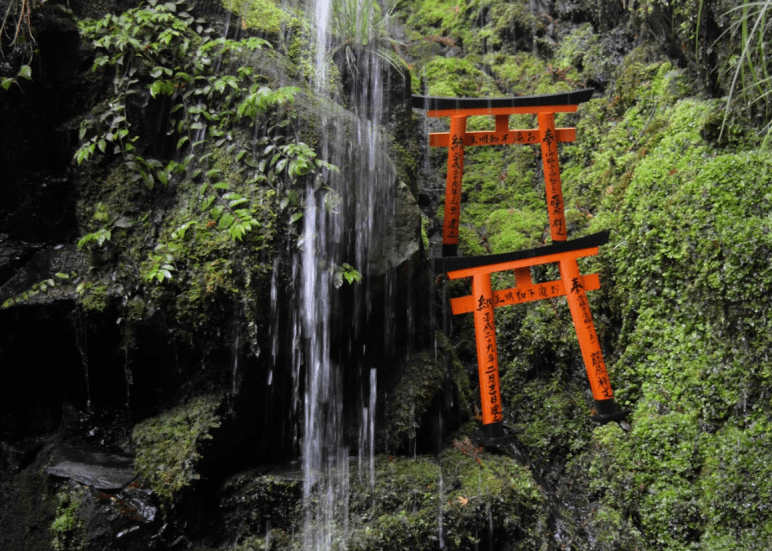When you think of Japan a few images may come to mind, towering sky scrapers, robot waiters, sushi, or the bright vermillion gates of shinto shrines. One place in Japan is especially famous for these gates in Fushimi Inari Taisha which is for the shinto shrine of Inari, goddess of the harvest, situated in Kyoto.

Fushimi Inari is now the number one tourist destination in Kyoto, if you haven’t been here before I’d really recommend it, I just visited there for my third time! Fushimi Inari shrine has a long history, built in 711 and relocated to its current location over 100 years later. The shrine enshrines the goddess Inari, known as the god of rice, the god of the harvest and now often the god of good business. Therefore the shrine is busy with not only tourists, but with Japanese companies too!
This is one of the busiest places in Kyoto, I’d recommend either going early in the morning or after dark, the gates are lit up and it is both eerie and beautiful (if you’re lucky you might even meet a tanuki!)
The shrine is easily accessible as it is just across the road from the JR Nara line at Inari station. You can also walk from Kyoto station, it wouldn’t take too long. The main shrine sites at the base of the mountain Inari, the famous gates start here and wind themselves all the way up to the peak of the mountain at 233 meters. 
The hike takes roughly two hours but is really worth it, the higher you get the fewer and fewer people you will see. The shrine also takes on a more otherworldly feeling, you can almost sense the history of this place. Each gate, shrine or statue that you can find on your way up has been donated by someone who wants their wish to come true. In the lesser walked areas of the shrine grounds (you could spend hours walking to each little section) you will find old, weather worn kitsune (the fox messengers of Inari) statues, guarding the shrines and tablets of those who donated. 
The view from the top if quite nice, especially on a clear day, but the best thing about the top is seeing all the shrines, representing the wishes of so many Japanese people over the centuries. There is a route down which signs will direct you to, we followed the signs that said “no exit” – what they meant is you wouldn’t go past the tourist traps on the way down! This was great to follow as we saw the oldest parts of the shrine complex, and got attacked by a monkey! 

How amazing is the complex!! Such a long hike as well – but such incredible experience!!
LikeLike
It doesn’t feel so long because there are so many little shrines to explore!
LikeLiked by 1 person
Went here during cherry blossom season in April. It was a great experience. We made it to the top but it was anti climatic, no views but the experience was the reward. The best view is on the lower stations.
LikeLike
I agree, the Kyoto skyline is no where near as beautiful as in Tokyo. I was there in April too!
LikeLike